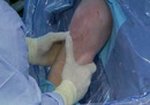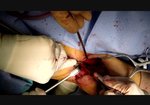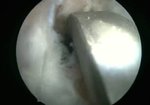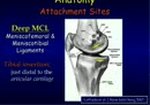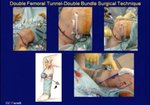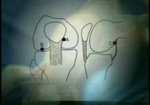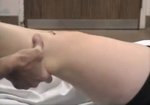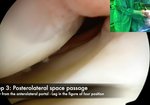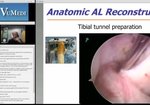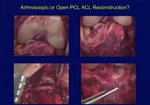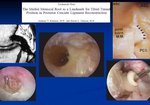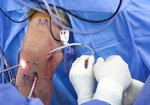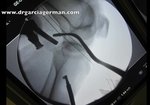Playback speed
10 seconds
Arciero PLC Posterolateral Corner Reconstruction
992 views
April 22, 2024
Arciero Technique in a 33 yo patient with chronic PLC lesion.
An incision is made ...
read more ↘ on the hockey stick from the lateral epicondyle distally, passing between the fibular head and the Gerdy tubercle.
Dissection is carried out up to the fascia.
First fasciotomy on the posterior aspect of the fibular head and posterior to the biceps tendon to dissect the common peroneal nerve and mark it. Then, the posterior aspect of the fibular head is cleaned of the popliteal remnant. The distal insertion of the LCL is observed.
An anterolateral to posteromedial tunnel, 7mm in diameter, is created and passed with vicryl in a loop.
Second fasciotomy is performed posterior to the iliotibial band and anterior to the femoral biceps, and the posterior capsule (anterior to the gastrocnemius tendon) is dissected. A posterior arthrotomy is performed and marked with vicryl.
Third fasciotomy is performed halfway through the iliotibial band, over the lateral epicondyle.
An anterodistal arthrotomy is performed. The femoral insertion of the popliteal (alongside the beginning of the cartilage) is identified.
A point is marked distal and anterior to the popliteal, and a 7mm tunnel is created.
An 18mm point is marked proximal and anterior, and a new 7mm tunnel is created that perforates the medial femoral cortex.
A cadaveric graft of the anterior tibial is passed through the peroneal tunnel.
The distal portion of the graft passes through the soft tunnel to the second fasciotomy and then through the posterior-to-anterior arthrotomy.
The graft is fixed in the popliteal tunnel with an 8mm Peek screw.
A deep soft tunnel is created through the iliotibial band and biceps tendon, and the anterior portion of the graft is retrieved to fix in the femoral LCL tunnel with a 8mm Peek screw at 30 degrees of flexion and slight valgus.
The posterior arthrotomy is closed by suturing to the graft.
Closure by layers.
↖ read less
An incision is made ...
read more ↘ on the hockey stick from the lateral epicondyle distally, passing between the fibular head and the Gerdy tubercle.
Dissection is carried out up to the fascia.
First fasciotomy on the posterior aspect of the fibular head and posterior to the biceps tendon to dissect the common peroneal nerve and mark it. Then, the posterior aspect of the fibular head is cleaned of the popliteal remnant. The distal insertion of the LCL is observed.
An anterolateral to posteromedial tunnel, 7mm in diameter, is created and passed with vicryl in a loop.
Second fasciotomy is performed posterior to the iliotibial band and anterior to the femoral biceps, and the posterior capsule (anterior to the gastrocnemius tendon) is dissected. A posterior arthrotomy is performed and marked with vicryl.
Third fasciotomy is performed halfway through the iliotibial band, over the lateral epicondyle.
An anterodistal arthrotomy is performed. The femoral insertion of the popliteal (alongside the beginning of the cartilage) is identified.
A point is marked distal and anterior to the popliteal, and a 7mm tunnel is created.
An 18mm point is marked proximal and anterior, and a new 7mm tunnel is created that perforates the medial femoral cortex.
A cadaveric graft of the anterior tibial is passed through the peroneal tunnel.
The distal portion of the graft passes through the soft tunnel to the second fasciotomy and then through the posterior-to-anterior arthrotomy.
The graft is fixed in the popliteal tunnel with an 8mm Peek screw.
A deep soft tunnel is created through the iliotibial band and biceps tendon, and the anterior portion of the graft is retrieved to fix in the femoral LCL tunnel with a 8mm Peek screw at 30 degrees of flexion and slight valgus.
The posterior arthrotomy is closed by suturing to the graft.
Closure by layers.
↖ read less
Comments 0
Login to view comments.
Click here to Login

